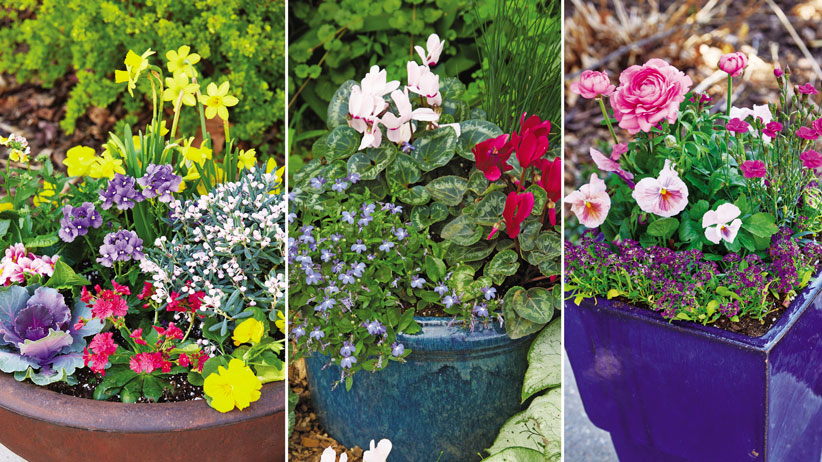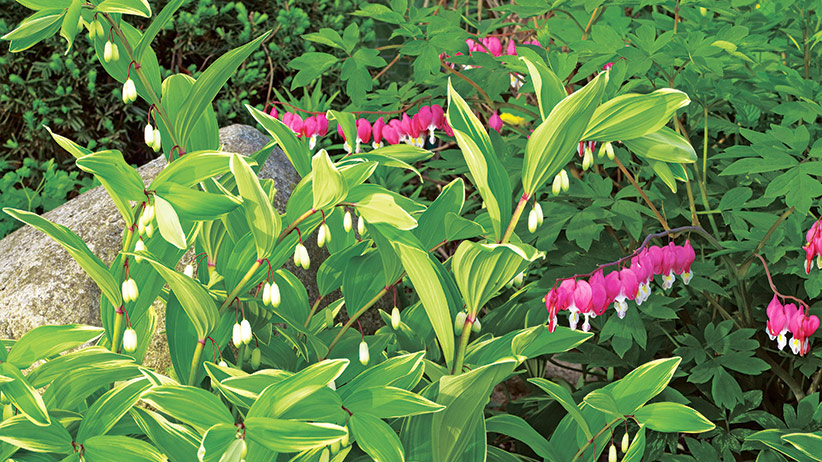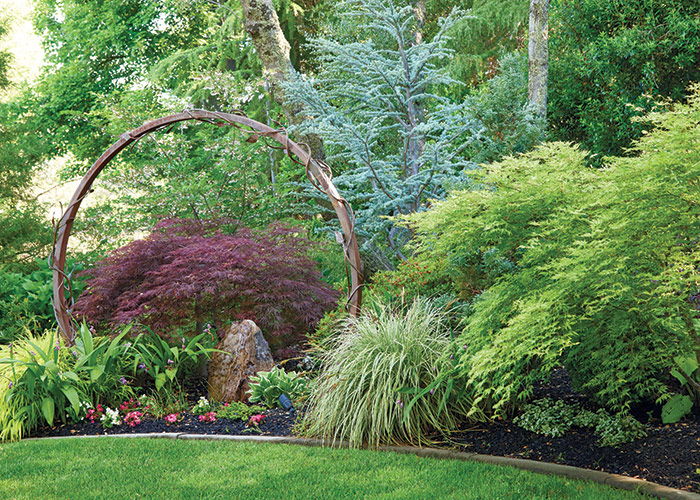
Starting a new garden from scratch
Downsizing for Ruby and Frank Andrews meant moving from a 30-acre ranch with a 3-acre garden to their 1-acre property in Granite Bay, California, a suburb of Sacramento. There wasn’t much there when they moved in 13 years ago, but that was just fine with Ruby — she relished the challenge of bringing some life to this mostly empty yard. Drawing on her passion for textural plantings, Japanese maples (Acer spp. and hybrids) and water features, Ruby created a peaceful retreat, which the couple enjoys daily and also shares when they open their garden for tours.
Learning from the garden
Initially Ruby thought it would take a year to get the garden figured out—after all, she gardened on 3 rocky acres in the country for 32 years, and this is a much smaller space. But after 12 years, Ruby is finding, much to her enjoyment, that there’s still a lot to learn about the yard, and she’s in no hurry. Let’s walk through the garden to see what she’s done so far. Don't miss the Talk & Tour video to experience even more of Ruby's garden.
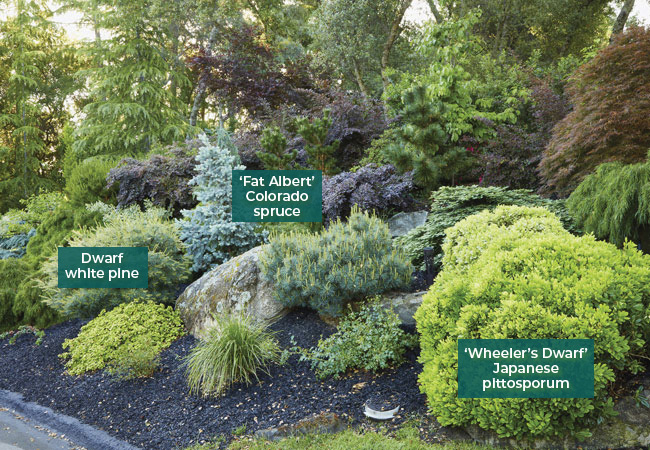
Drought-tolerant curb appeal
When you live where the average summer temperature is 92 degrees F, trees are a big help. Ruby and Frank have added countless trees to the original dogwoods (Cornus spp.), oleanders (Nerium oleander) and scrub oaks (Quercus spp.) in this northwest-facing yard. But the original trees and turf on the slope near the street used to struggle in the poor, dry soil in this northwest-facing yard. Ruby and Frank brought in lots of “planter’s mix,” a combination of compost and other amendments, to improve growing conditions. They replaced the dying plants with Cousin Itt acacia (Acacia cognata), ‘Breeze’ dwarf mat rush (Lomandra longifolia), Texas ranger (Leucophyllum frutescens) and other drought-tolerant plants. Evergreens ‘Fat Albert’ Colorado spruce (Picea pungens), dwarf white pine (Pinus spp.) and ‘Wheeler’s Dwarf’ Japanese pittosporum (Pittosporum tobira) ensure year-round curb appeal. They’ve also added several stones as accents.
When Ruby sets a large one, she makes sure to arrange it so the best-looking feature faces out. In this bed, she hired a crane to place the largest stones. To get a natural look, she also buries at least a third of the rock in the ground and groups them in odd numbers.
Related Articles:
7 Ways to Use Conifers in the Garden
Need help designing your garden? Check out our books!
How to Create a Spiral Topiary
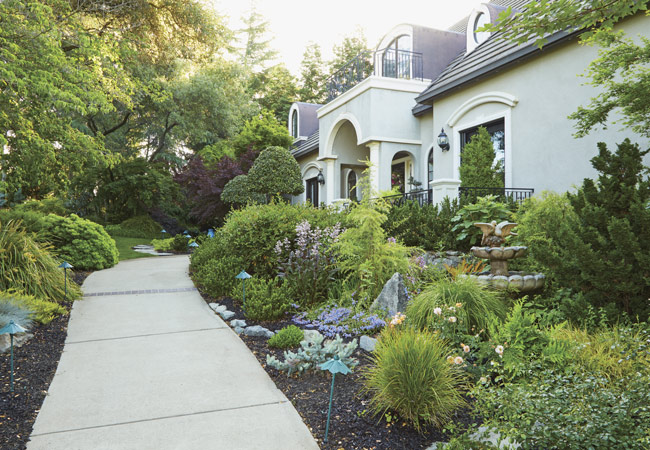
Start the tour in the front yard
Take the walkway to the front door above to see more evergreens in a variety of shapes, sizes and colors creating a tapestry of texture. If there’s one thing Ruby would do differently, it would be to not use little- leaf boxwoods (Buxus microphylla). She’s replaced most them with boxleaf euonymus (Euonymus japonicus) in recent years. It has similar evergreen foliage and structure but tolerates the hot California summers better. At the bend in the walk, you’ll see the border with a dramatic circular arbor. Although it was originally installed looking out on the street, Ruby later realized the arch made a perfect companion to a recently installed fountain and moved it. Now this duo is the focal point of the front yard.
Though Ruby has replaced at least half of the original lawn, she doesn’t want to eliminate all of it because it provides a visual resting place and contrast to the borders. Now let’s move along to the shady side yard Ruby calls “Frog Lane.”
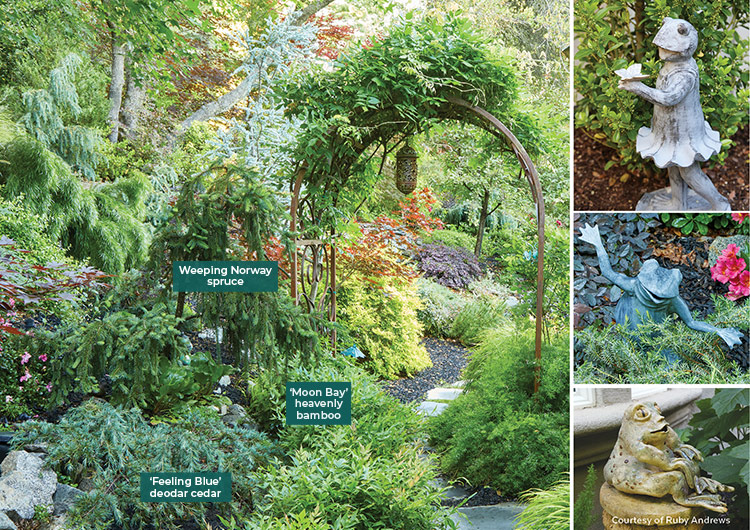
Walk the shady side yard
This northeast-facing side yard gets is called “Frog Lane” because it's home to Ruby's charming collection of ornamental frogs. As you walk the casual path, you'll find a mix of sun and shade plants. In the shadier spots near the house and path, you’ll find ‘Moon Bay’ heavenly bamboo (Nandina domestica) and hakonechloa (Hakonechloa macra). Where there's more sun further up the slope and near the end of the path, weeping Norway spruce (Picea abies ‘Pendula’) and ‘Feeling Blue’ deodar cedar (Cedrus deodara) thrive.

Relax in the backyard
Step through the arbor at the end of Frog Lane and you’ll notice three patios that run along the back of the house. Colorful borders around each patio provide up-close interest all season and create a cozy feel while you’re sitting there. The curving brick-lined sidewalk above edges the patio gardens and gets you out into the rest of the backyard.
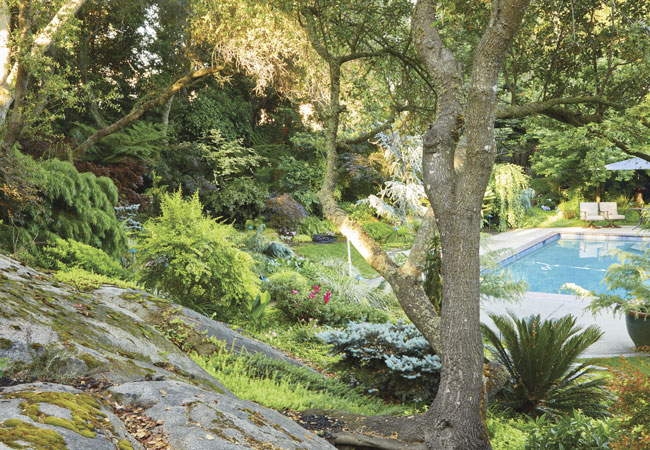
Stony soil is a real challenge
One big difficulty that showed up as soon as Ruby started revamping the yard was the rocky soil — digging was a real challenge! She ordered 170 yards of topsoil from a local landscaper and worked it into the rocky soil around the yard to make it more hospitable for plants (and easier for her to work in). But that wasn’t all: The builder had pushed the stone uncovered during building into a pile at the back of the property. This mess might have discouraged some gardeners, but not Ruby. She simply called her old friend and bonsai master Hiro Matsuda to help her make use of the rock pile. After lots of good-natured banter and discussion, they decided to redistribute some of the stones in a way that created large planting pockets. Most were arranged around the base of the natural outcropping above to help tie stone and garden together.
As you wander through the garden you won’t see everything all at once — Ruby has designed it with winding paths and nooks and crannies to explore. Nestled in among the foliage you might find a birdbath or a bench where you can enjoy a view.

Adding water features to the garden
Ruby’s childhood trips to Yosemite National Park’s majestic waterfalls probably inspired her love of water features. The blue recirculating fountain above, a gift from her husband, is positioned above the patio, where they often sit and relax in the evening. The fountains can run all year here since it doesn’t freeze. But to save energy and water, she turns off the out-of-the-way water features when no visitors are expected.
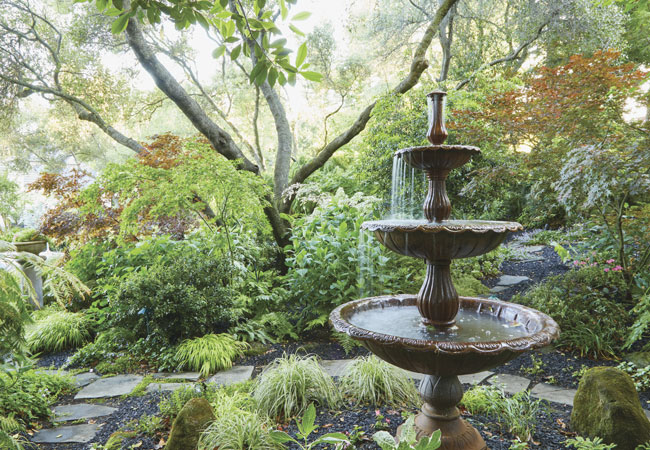
Fountain try-outs
At the back of the yard, nestled in among scrub oaks (Quercus spp. and hybrids) and redwoods (Sequoia spp.), you’ll discover a patio with a bench next to a small waterfall. Have a seat and take in the view and the sound of running water in this intimate spot. Keep wandering the shady paths and you’ll find the tiered fountain above.
Ruby puts the garden together intuitively: She tries a plant, fountain or ornament in a place that seems right, but she doesn’t hesitate to make changes if the look doesn’t click. In its first home in the front yard, the tiered fountain was too large. Once she had the shady backyard cleaned up, Ruby decided to give the fountain a try there. Its size and rustic style was a perfect fit for this casual setting.
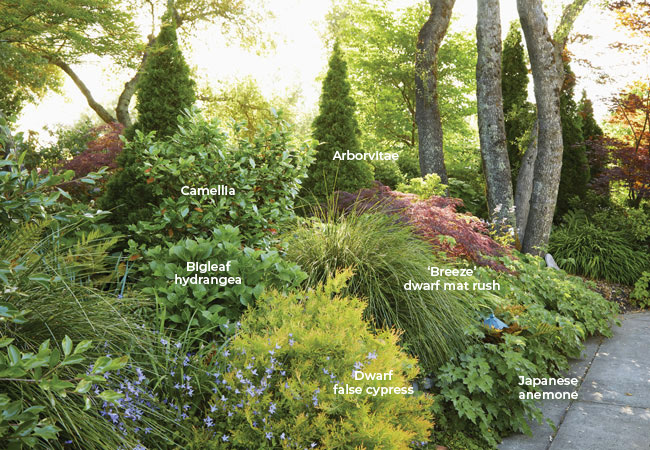
Terrific texture for the border
Ruby has found that the key to texture in the garden is growing a variety of plant forms, foliage colors and shapes. This border along the driveway above shows how great a garden of mostly foliage can look. Even without many flowers you can’t miss the bright gold dwarf false cypress (Chamaecyparis spp. and hybrids) and pyramidal arborvitae (Thuja occidentalis). A supporting cast of dwarf mat rush, Japanese anemone (Anemone hupehensis), bigleaf hydrangea (Hydrangea macrophylla) and camellia (Camellia japonica) all have different leaf shapes and sizes in shades of green. So while there’s plenty of diversity, it’s still cohesive.
This is another area where Ruby’s experimentation has made a difference. She has no problem moving plants around and trying different combinations until she finds a mix that’s just right. Every year she makes plans to start a new bed or renovate an existing one.
Related Articles:
Five Panicle Hydrangeas for Your Garden
Check Out Our Garden Plans
Drought Tolerant Garden Tour in California
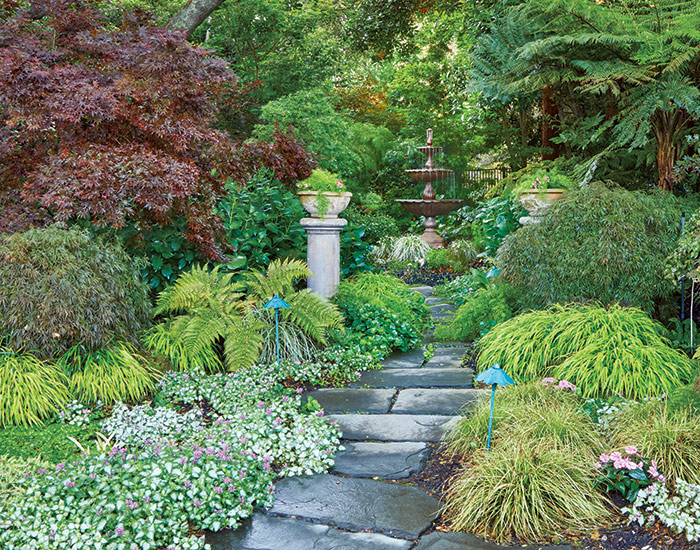
In love with Japanese maples
Ruby has more than 100 Japanese maples around the yard. She loves the variety this group of trees provides. In fact, when a friend offered her a 15-foot-tall tree as long as she could dig it from her garden, she immediately said “yes.” Then she had to convince Frank. He and his small crew had quite a project: Not only was the tree large, it resided in an courtyard surrounded by a house. So they dug it, surrounded the rootball with burlap, wrapped the branches in netting and even pruned off a few small branches to help them navigate through lights and wires as they moved the tree out. After that adventure, he says they’ve learned to be a bit more careful about accepting free plants.
Growing Japanese maples
Japanese maples have grown well in this zone 8 garden over the years. You can see just how beautiful they look near the tiered fountain above. Working organically rich topsoil into the site before planting has contributed to their success. But these trees do need regular watering to thrive. A mix of drip irrigation and traditional sprinkler heads makes the job easier. The maples look so good that visitors often ask for growing tips, and Ruby is happy to share her experience. You can find her suggestions in “Ruby's tips for growing great Japanese maples” below.
Ruby finds that even if you’re an experienced gardener, there’s something you can learn from a garden of any size, you just have to look carefully.
Ruby's tips for growing great Japanese maples
- Japanese maples grow best in organically rich, well-drained soil.
- Regular watering is especially important when it’s over 90 degrees F in summer. Ruby uses an irrigation system, but instead of drip emitters, she prefers those with a light spray because it’s easier to see at a glance if they’re working.
- She also recommends checking each emitter annually to make sure mulch or foliage isn’t blocking the spray.
- Give new plants extra shade. Japanese maples are understory trees, so Ruby sets up shade cloth or an umbrella over newly planted ones for a week or two as extra protection until they are acclimated.








